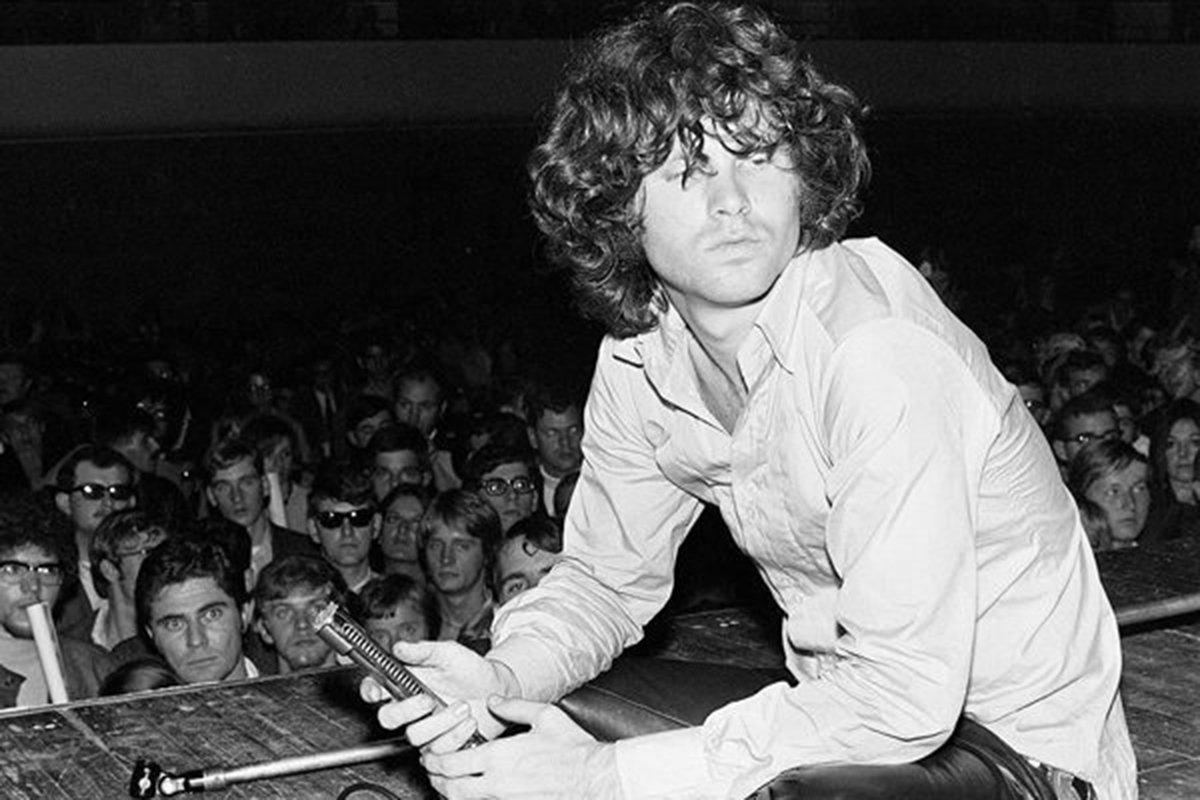From 1969 to today: how a rock vision anticipated fifty years of music.
From Jim Morrison’s vision to the modern electronic scene: the evolution of the solo electronic artist.

The Prophecy of Jim Morrison and the Rise of the Electronic Solo Artist
In 1969, during an interview, Jim Morrison of The Doors dropped a line that now sounds like a prophecy:
“I can envision maybe one person with a lot of machines, tapes, and electronics set up, singing or speaking and using machines.”
In an era dominated by rock bands, the idea of a solo artist surrounded by electronic machines was pure science fiction. Audiences craved guitars, drums, sweat. Live music was a physical and collective experience, and sound systems were still primitive. Just think of the Beatles’ 1965 concert in Rome—those far from the stage heard the crowd’s roar more than the music
The Silent Pioneers
In the 1970s, a few visionaries started to pave the way:
- Wendy Carlos topped the charts with Switched-On Bach (1968), but remained confined to the studio.
- Klaus Schulze experimented alone with sequencers and modular synths, creating cult soundscapes.
- Kraftwerk transformed man into machine—but always as a collective, never as a true solo act.
Jean-Michel Jarre and the Birth of the Mass Electronic Show
The 1980s brought massive sound systems and the rise of MIDI, synchronizing machines and computers. Enter Jean-Michel Jarre: a single artist surrounded by synthesizers, lasers, projections, and fireworks, performing in front of millions. He turned Morrison’s prophecy into a mainstream reality—a one-man electronic band turned global superstar.
The Radical Minimalism of Aphex Twin
In the 1990s, the prophecy took on a new form. Aphex Twin stepped onto the stage with a desktop computer. No spectacular gestures. No band. The focus was no longer on image, but on a disorienting sound flow: new frequencies, rhythms impossible to replicate with traditional instruments.
The DJ and the Rise of Live Laptop Performance
At the same time, the DJ became the new face of live electronic performance. Once a selector, then a manipulator, and finally a live creator. The laptop on stage stopped being a mystery. Audiences learned to embrace the sound experience without worrying about the “how.” What mattered was the result: energy, emotion, immersion.
Today: The Scenic Machine
In today’s massive music festivals, we’re witnessing another shift. Electronic shows are often pre-programmed, timed to the millisecond to blend music, visuals, and stage design. The artist becomes an image—free to entertain, throw cakes, perform skits. The music flows perfectly, error-free, without surprises. But something is lost: uniqueness, improvisation, real-time connection with the audience.
Epilogue: A Cultural Vision Beyond Sound
That 1969 quote wasn’t just a musical prediction—it was a cultural vision. In fifty years, we’ve seen the electronic solo artist emerge, grow to fill stadiums, radicalize into laptop minimalism, evolve into a global DJ, and finally dissolve into pre-packaged perfection.
But the question remains:
Who truly embodies Jim Morrison’s prophecy today?
Our project is independent and non-profit.
If you enjoy what we do, you can support us with a small donation.
GET IN TOUCH
Schedule a Visit
This article was produced with the support of AI tools, used for content organization and textual optimization. The sources, ideas and materials come from the archive and activity of the Dancity Association.

